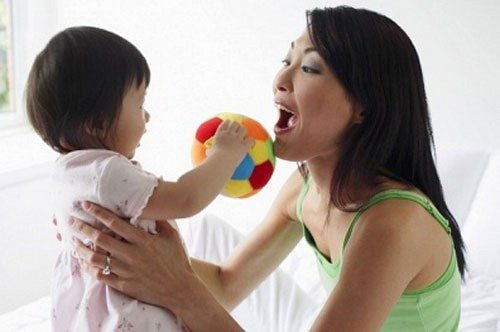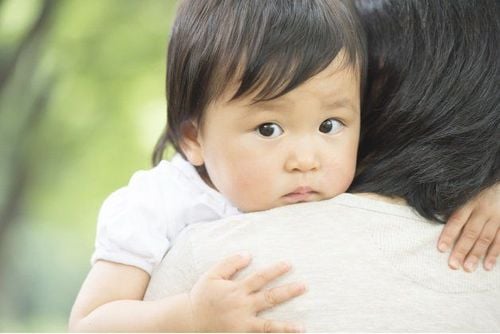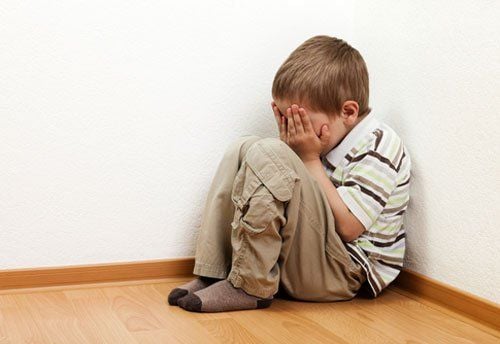This is an automatically translated article.
The article was professionally consulted with Specialist Doctor I Dang Thi Ngoc Chuong - Pediatrician - Pediatrics - Neonatal Department, Vinmec Central Park International General Hospital.Baby sign language is a specialized sign language used to communicate with non-verbal babies that has become increasingly popular over the past few decades. This type of language is intended to help children express their own needs and desires, thereby avoiding frustration and anger by bridging the gap when parents talk to their children.
1. How baby sign language works
No wonder babies can learn to make signs. Children's understanding of language and motor skills both develop much faster than their ability to speak. And children love to imitate: For example, most babies discover that waving means "goodbye" and long pointing at something they want means "look," before children can speak.Ideas to help take it a step further and teach babies vocabulary about signs were inspired by child development expert Joseph Garcia.
He discovered how well children with deaf parents learned sign language, and he also found that these children were less demanding than children who did not know sign language because they can express their thoughts and needs more easily.
So why do parents who give babies who are not deaf but don't enjoy the benefits of notation? Ultimately, Garcia thinks, if a baby can signal what he wants instead of screaming, everyone in the family will be happier.

Trẻ sơ sinh có thể học cách đưa ra các ký hiệu riêng để giao tiếp
2. The benefits of communicating with non-verbal children
Enhancing early communication skillsIn the process of daily living, babies really want to communicate with those around them and giving signs is a great way to help your baby do that.
Experts say: “As children's fine motor skills develop earlier than their ability to speak, babies will start clapping, waving and pointing from around six to eight months of age.
By their first birthday, children will have learned 30 to 60 simple symbols. However, experts stress that giving signs should not be used as a substitute for speech.
When you have a normal conversation with your child, you only need to use one sign to emphasize the main content we are trying to communicate with the child, for example “Do you want some milk?”.
A good self-esteem potion
With signing, your baby learns to communicate his needs and opinions long before he can speak, so you can easily respond meet the baby's needs.
Being able to communicate needs and have these needs met is a huge part of a child's health and self-esteem. This also boosts parental self-esteem, because it's great to be able to know what your child wants without having to speculate too much.

Ngôn ngữ ký hiệu giúp cha mẹ dễ hiểu và đáp ứng được nhu cầu của trẻ
Various studies have shown that giving signs can help reduce your child's tantrums when learning to speak.
The time when babies start to be rebellious, stubborn, and destructive peaks around 17 months of age, largely due to a discrepancy between your baby's needs and wants and her ability to understand herself.
Children will do better in school
Connecting the sound of a word with a picture symbol can help children understand the word faster.
When adults give signs, experts recommend connecting the spoken word with a visual sign, helping children remember and learn the word faster. Children who were able to give the sign had a larger vocabulary than those who did not. In addition, the more words a 5-year-old knows and uses, the better they will learn.
Parents bond more with their children
Baby giving signs is a great way to increase the level of interaction between you and your baby, and can help promote your baby's all-round development.
When your child's sign-giving efforts are recognized and praised, your child will grow stronger.
Children are eager to talk
There are differing opinions as to whether giving signs speeds up a child's speech development. And while no conclusions have been reached, baby's giving of signs has not been found to have any harmful effects on a child's ability to talk.
However, the indisputable fact is that your child can learn to sign many words before he can speak and this should not stunt his speech development.

Giao tiếp giúp trẻ cảm thấy háo hức khi được trò chuyện
One of the best benefits of giving your child signs is that it makes you feel like you're doing a great job parenting. Understanding what your baby wants will make you feel more understood about him, which in turn brings you and your baby closer together.
3. How to Communicate with Your Child Before He Can Talk
As with any new skill, it's important that you work at your baby's pace. The best time to start is when your baby begins to develop a desire for real communication. This usually happens around 8 or 9 months old, when you may notice your baby is more sociable, starts babbling and uses noises and facial expressions to get your attention.Start with a symbol for something your baby is interested in. Many babies quickly recognize the "more" sign associated with food. Every time you use this word, show your baby what the symbol is.
Always use the same symbol, repeating it over and over, and emphasizing the key word along with the symbol, so that your baby can clearly see and hear the connection.
Your baby may try the sign on his own after a few days or it may take a few weeks, so wait patiently. Remember, when working with children to give signs, make it as fun as possible. Newborns are more likely to learn from things they enjoy.
When a child shows abnormal signs of health, parents can take the child to Vinmec Health system for timely examination and treatment.

Cha mẹ nên đưa trẻ đến hệ thống Y tế Vinmec để khám khi có vấn đề về sức khỏe
Parents should supplement their children with supportive products containing lysine, essential micro-minerals and vitamins such as zinc, chromium, selenium, and B vitamins to help fully meet their child's nutritional needs. At the same time, these essential vitamins also support digestion, enhance nutrient absorption, help improve anorexia, and help children eat well.
Parents can learn more:
Signs of zinc deficiency in children
Micronutrient deficiency and failure to gain weight in children
Please regularly visit Vinmec.com website and update useful information to take care of your child. Take care of the baby and the whole family.
Reference source: babycenter.com














